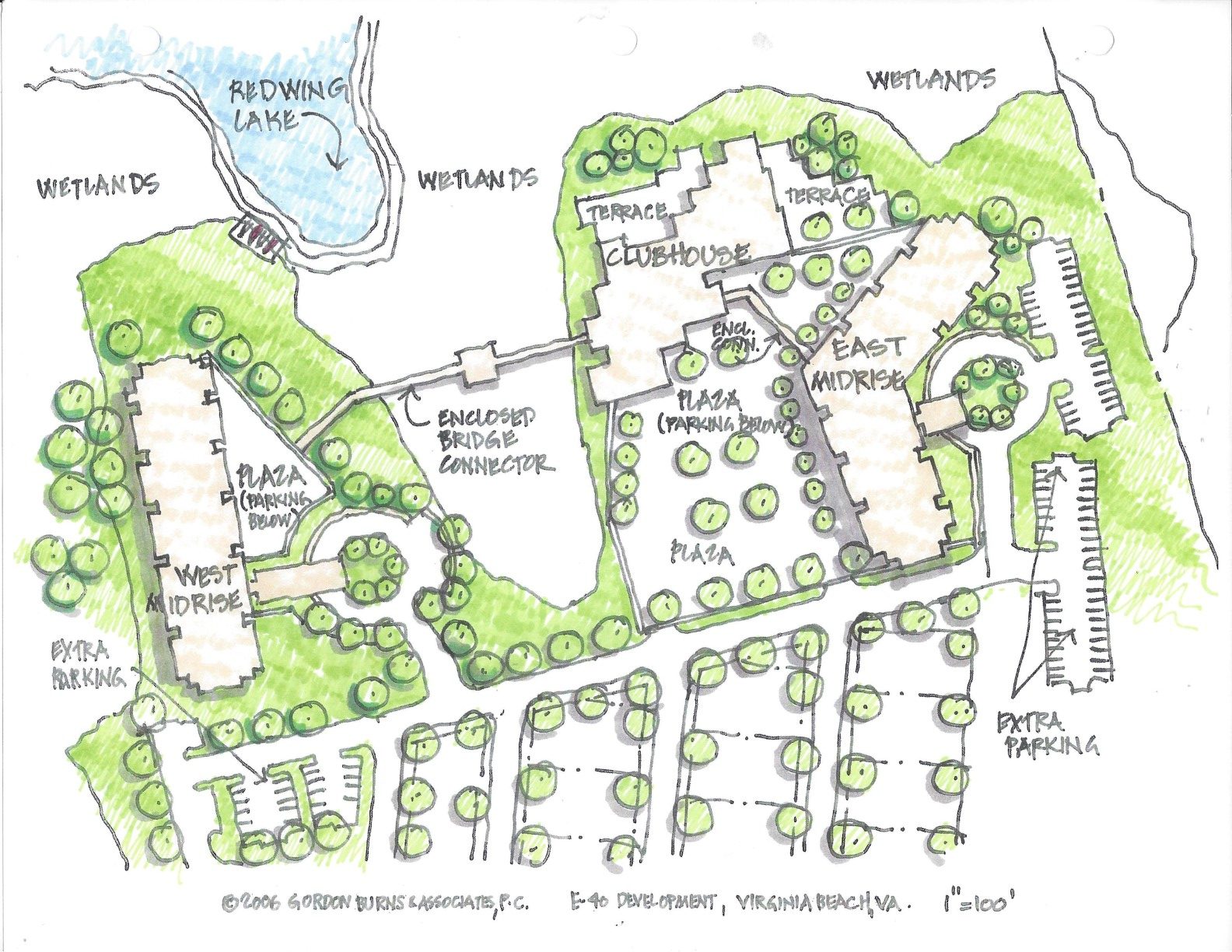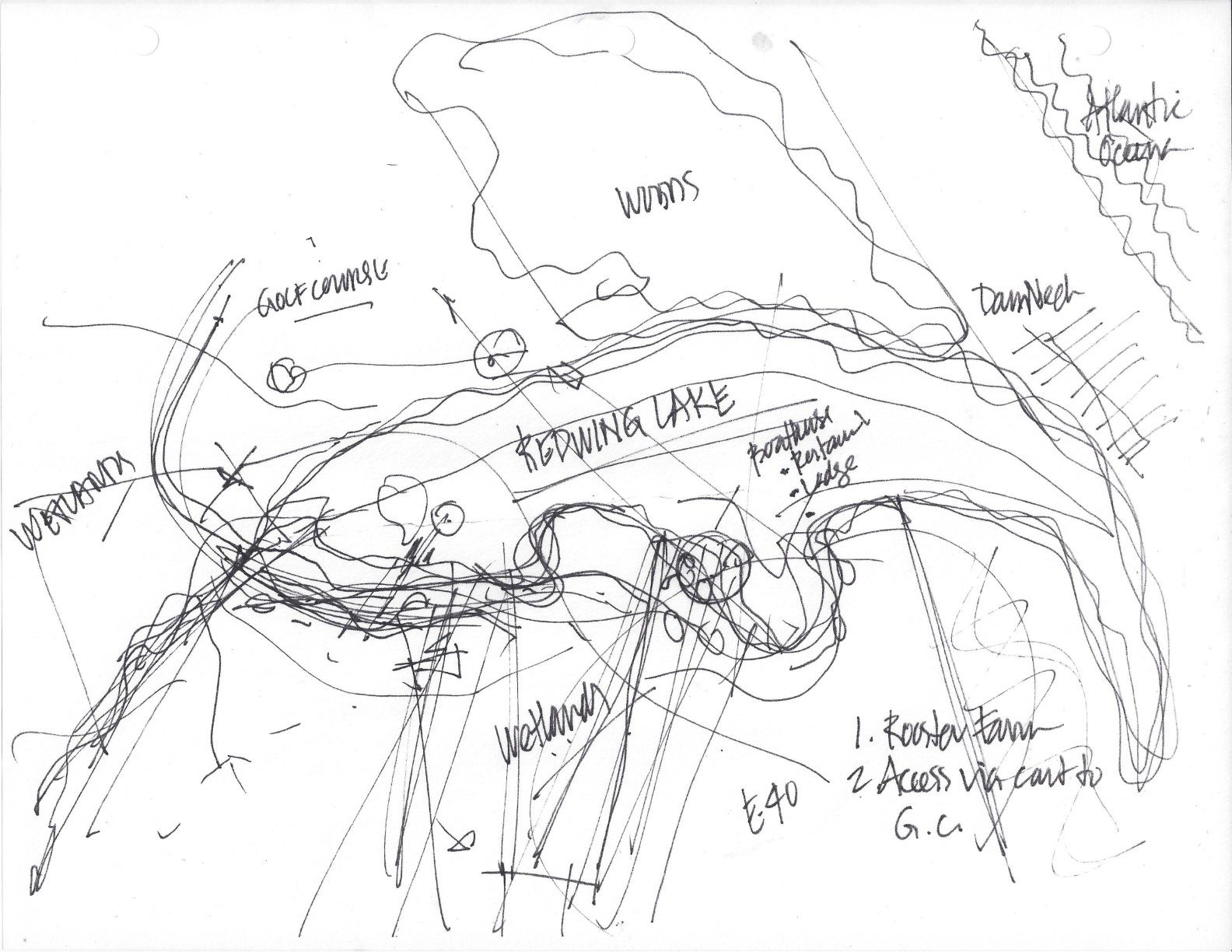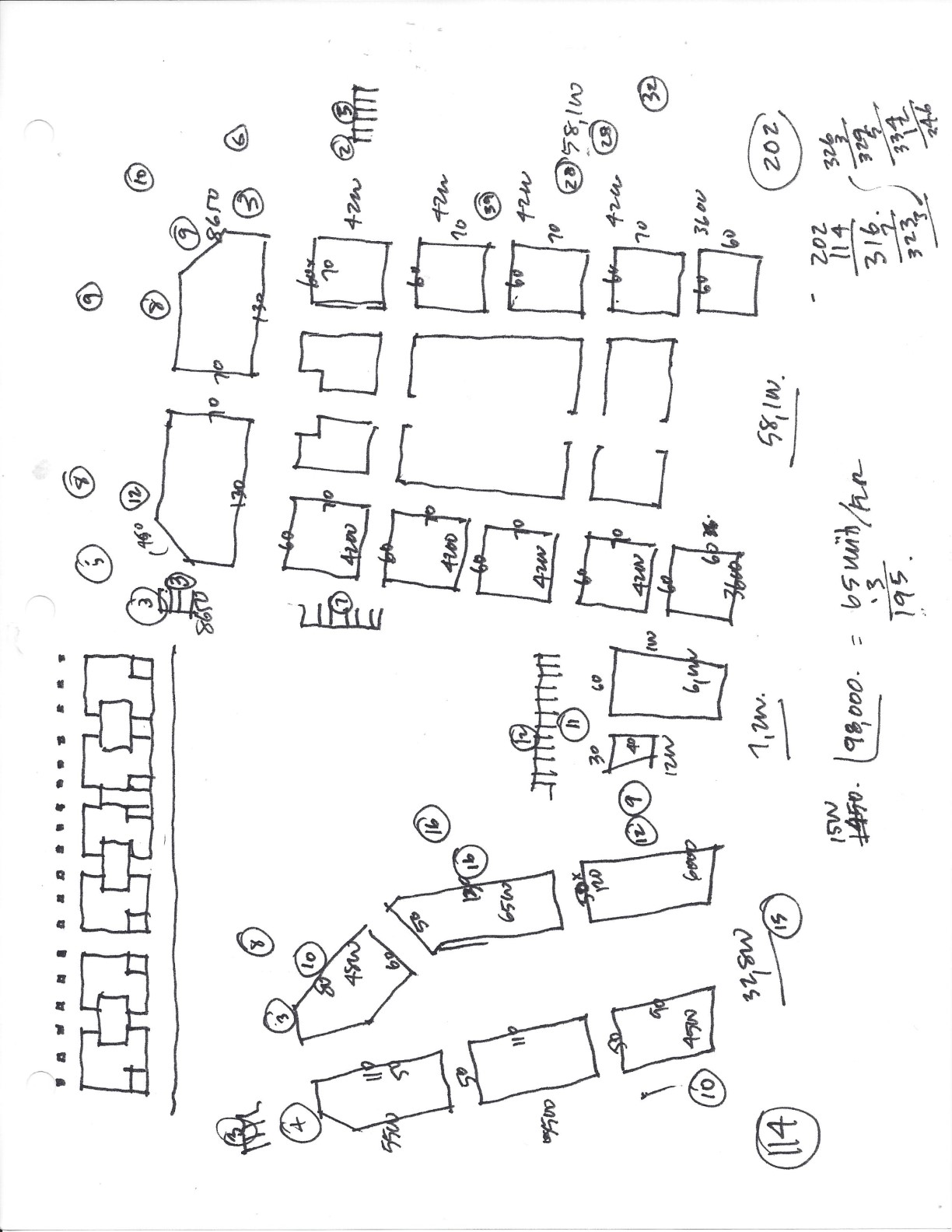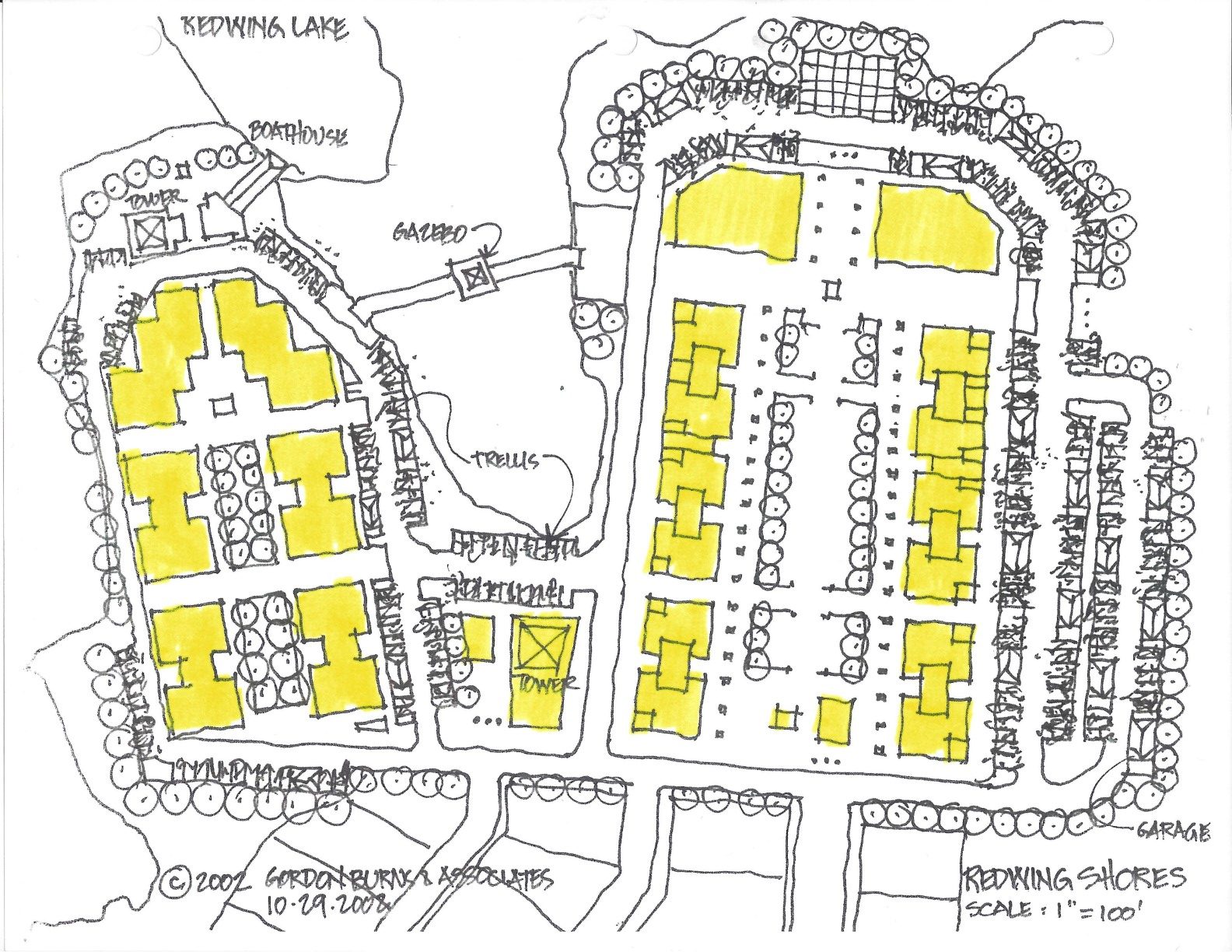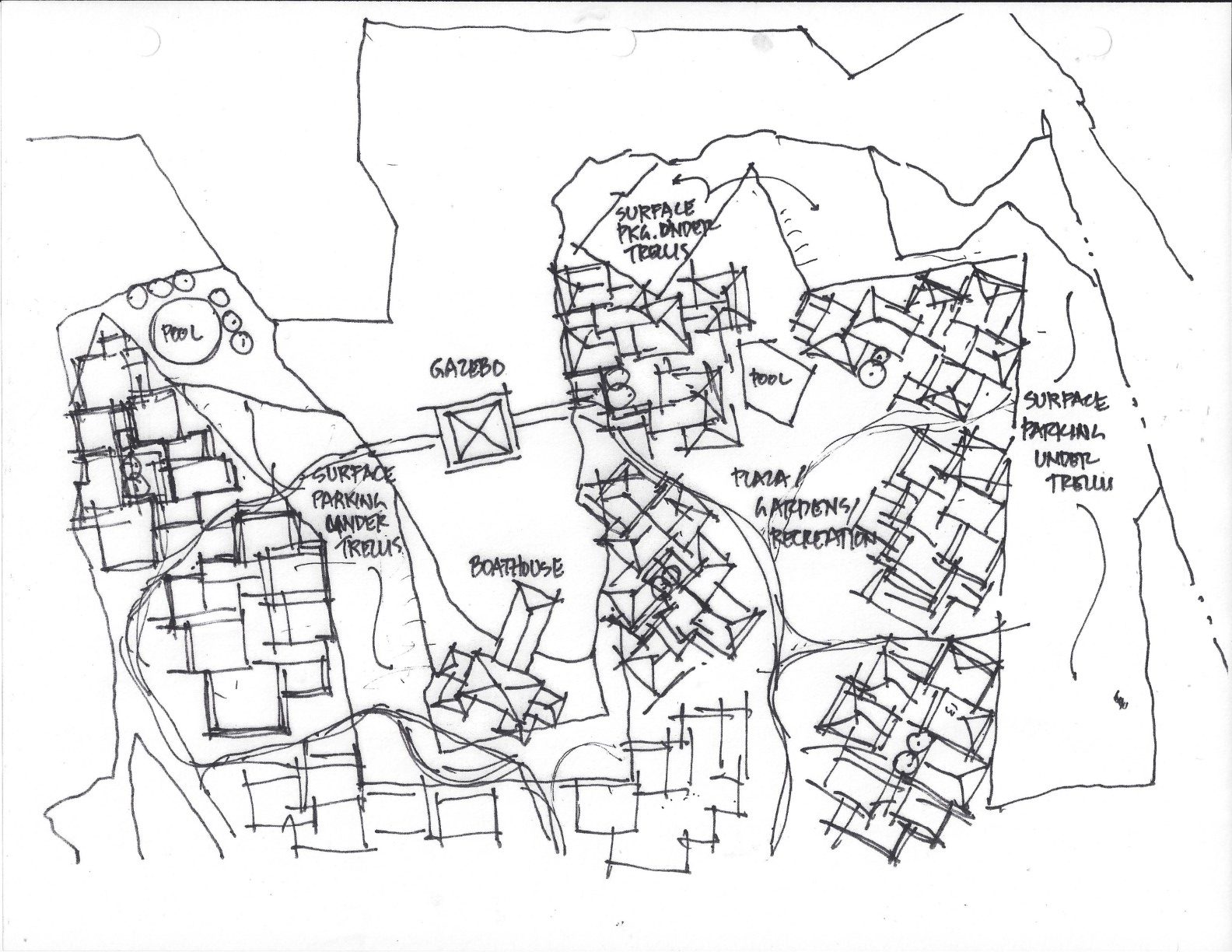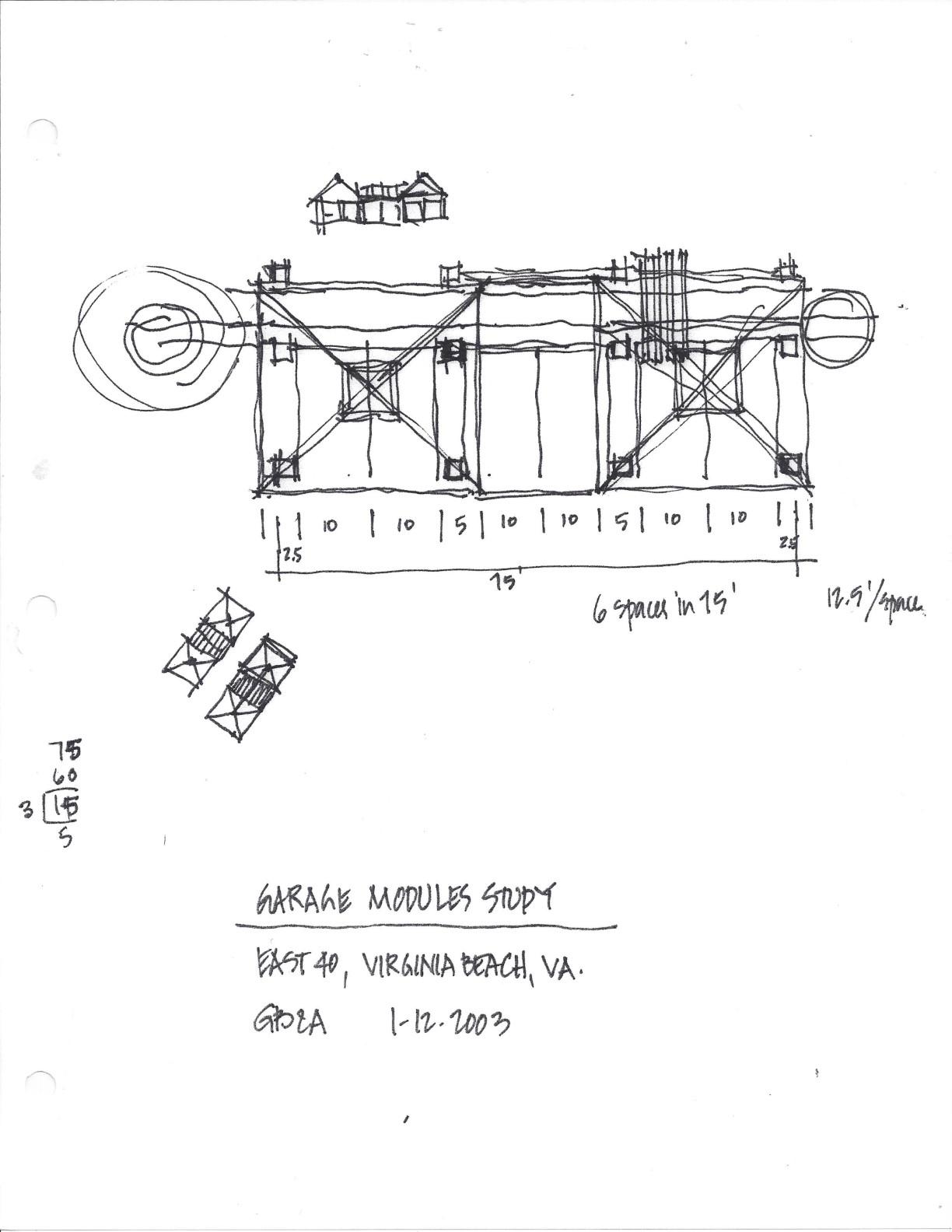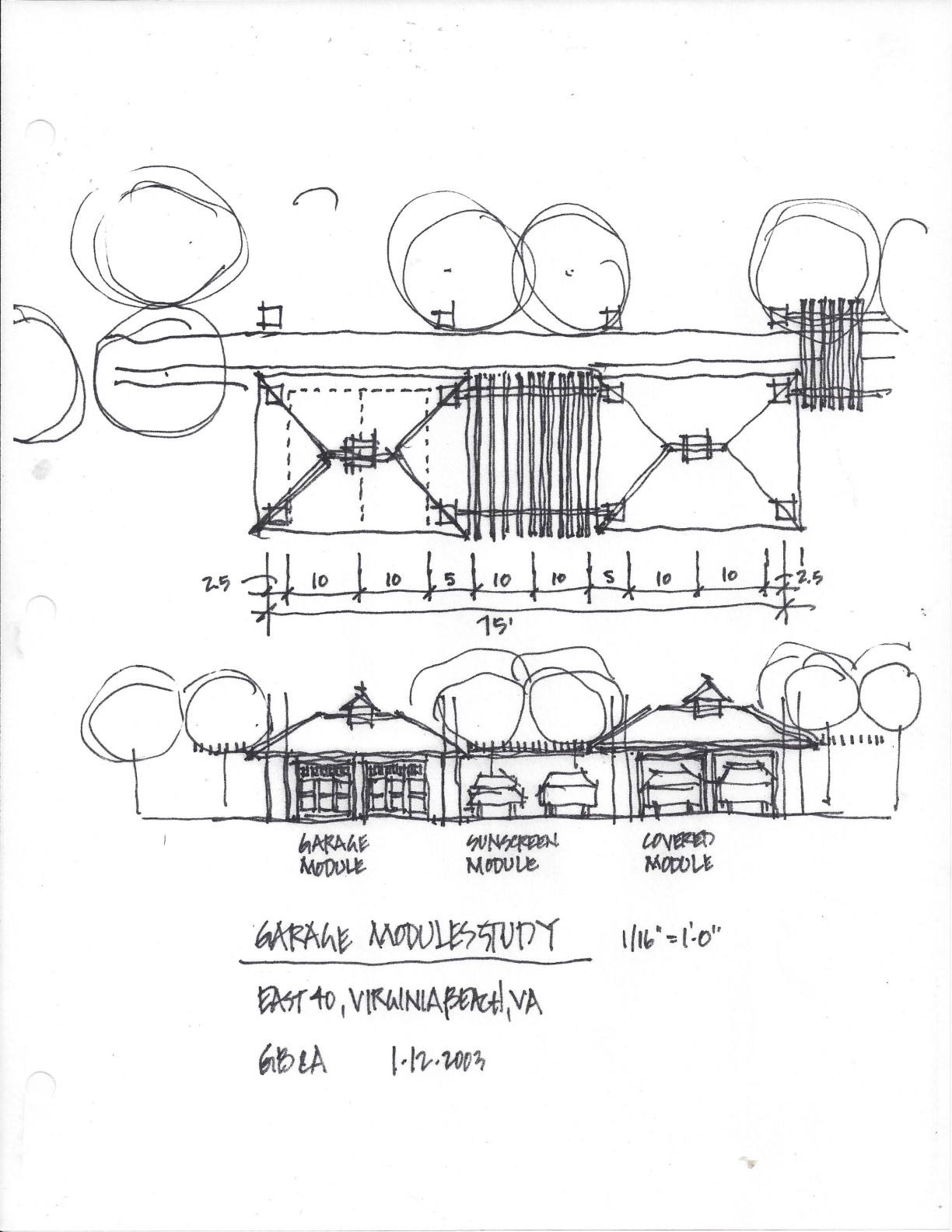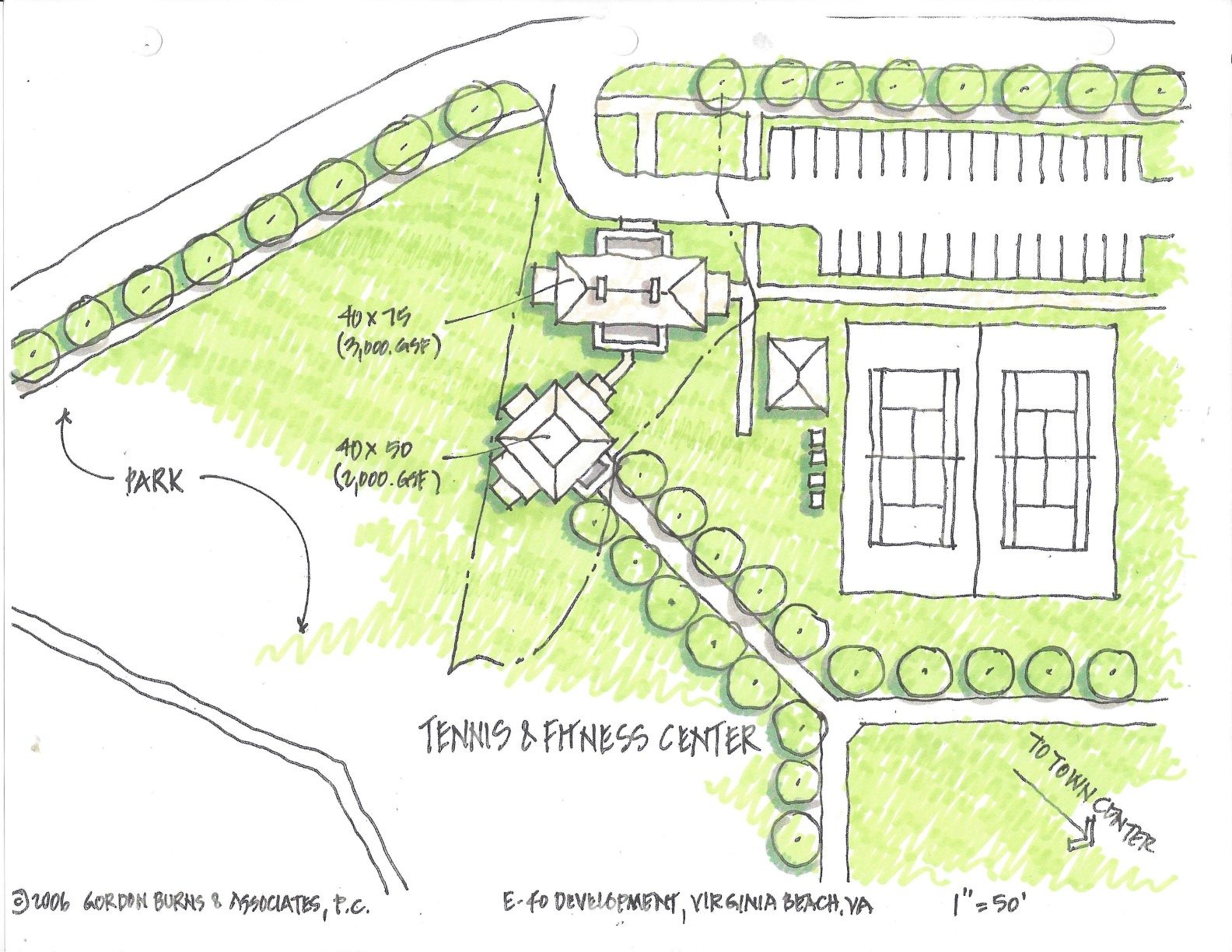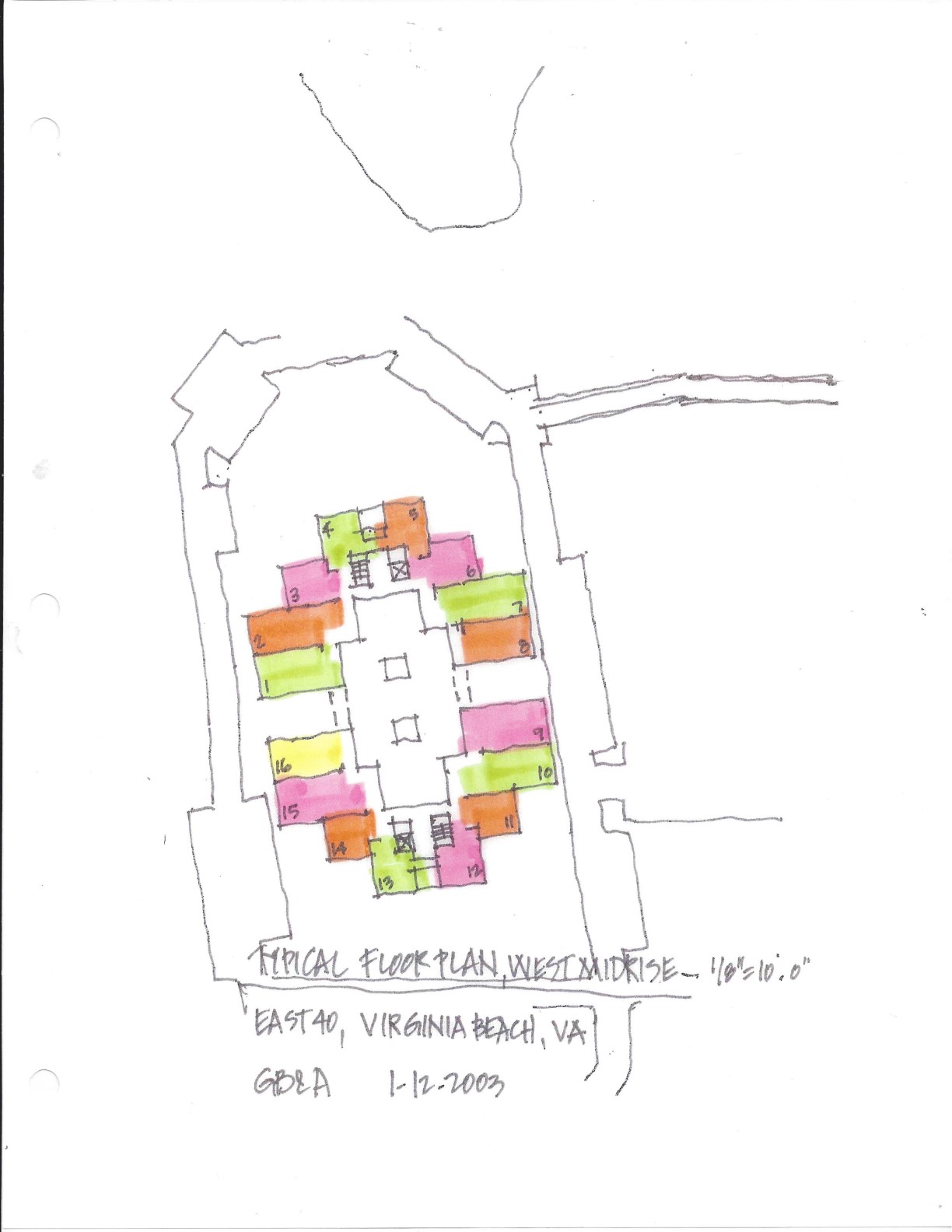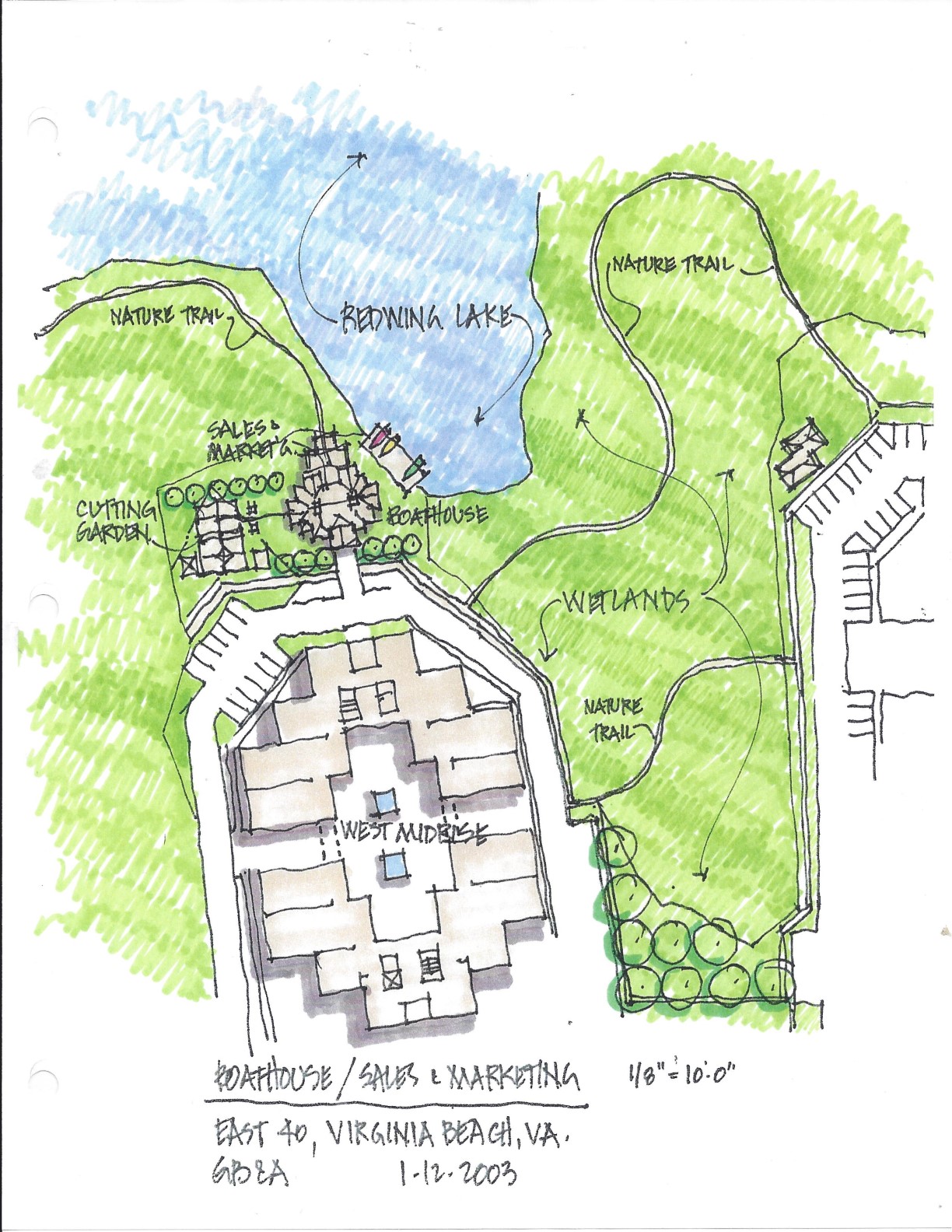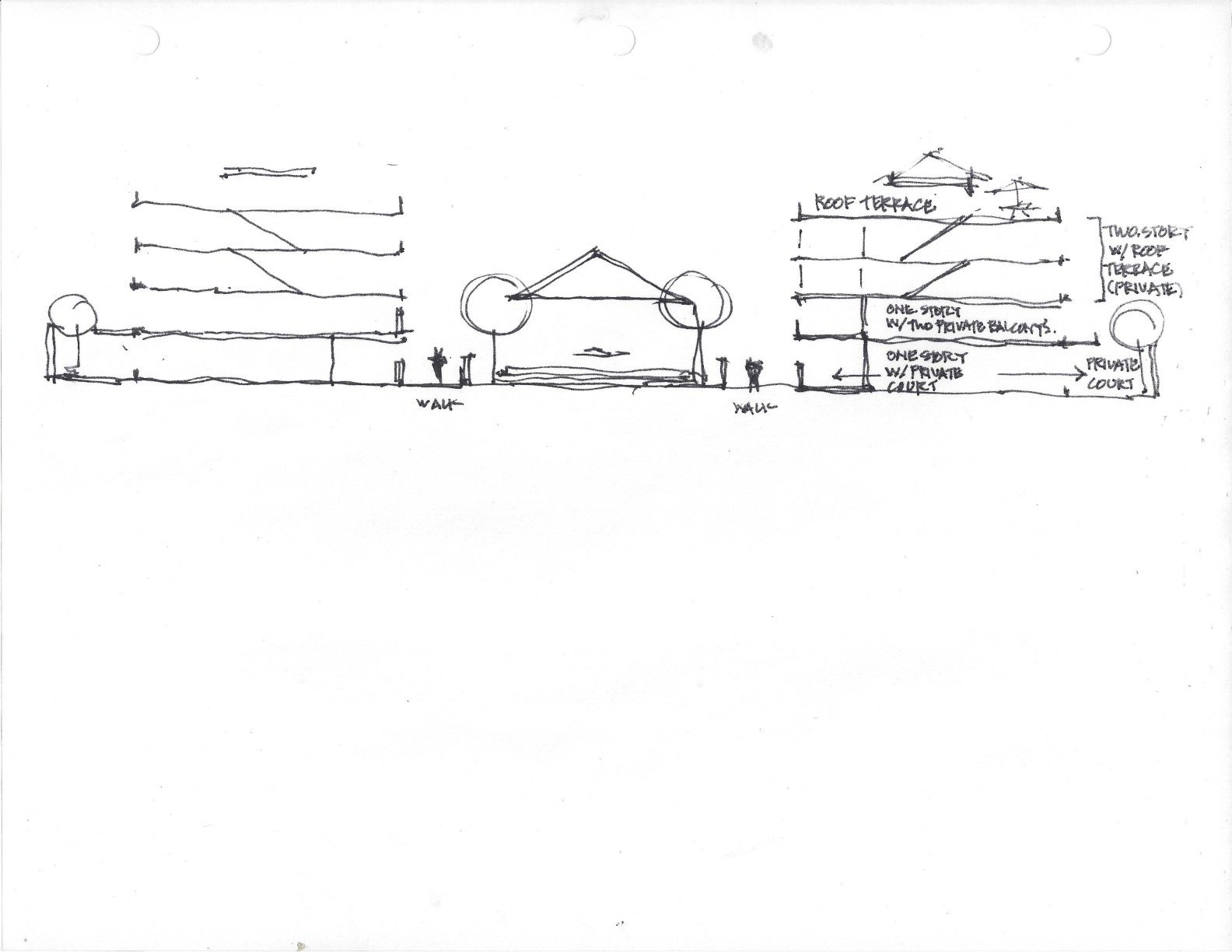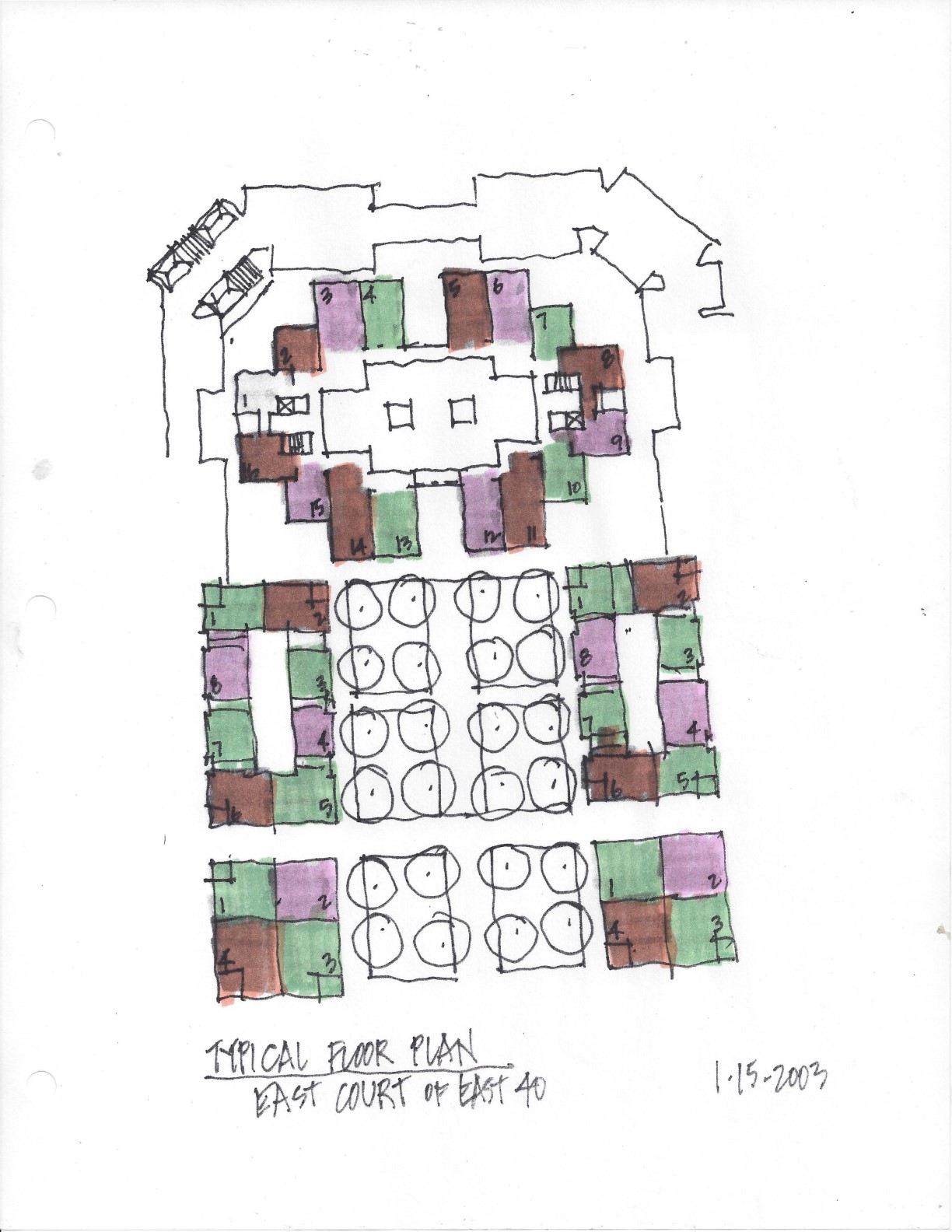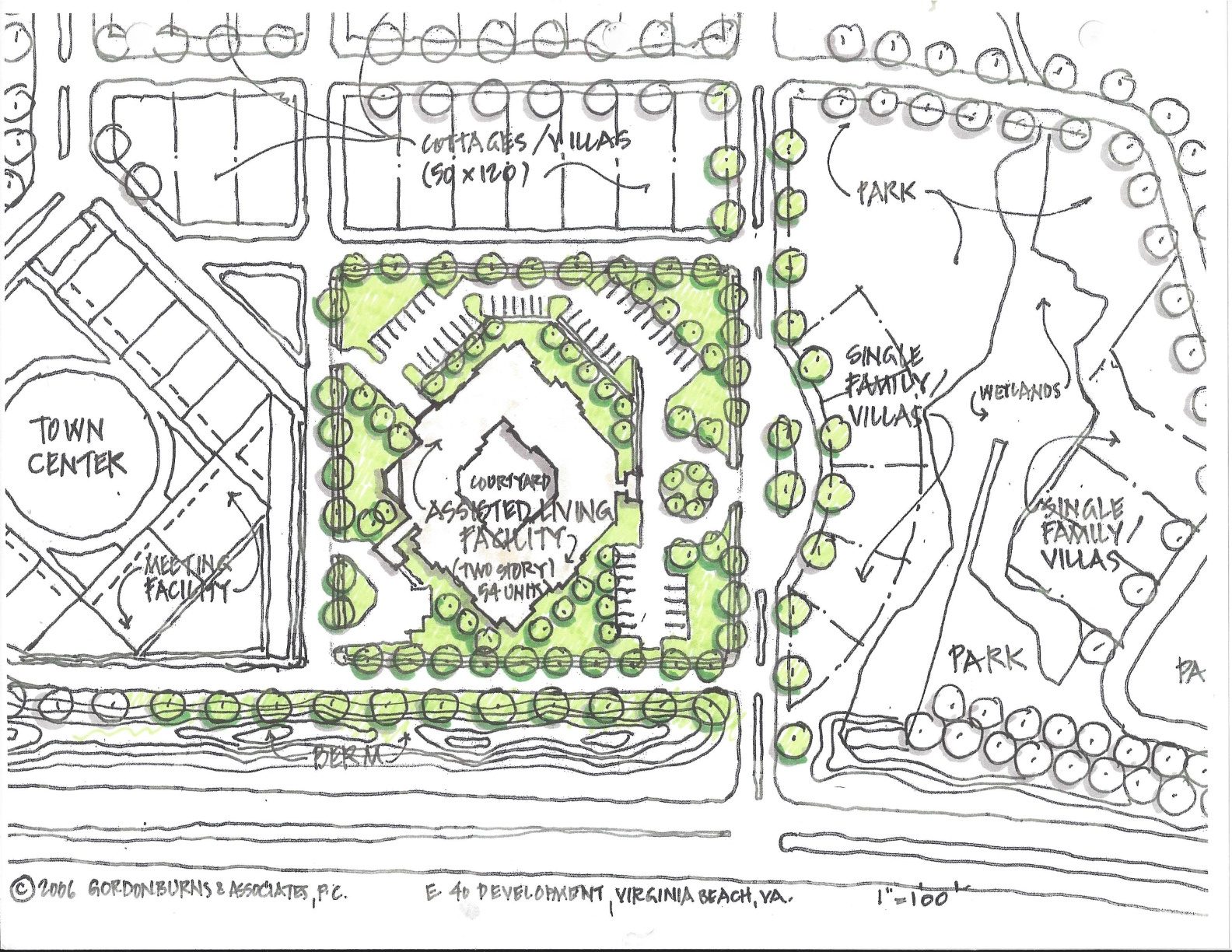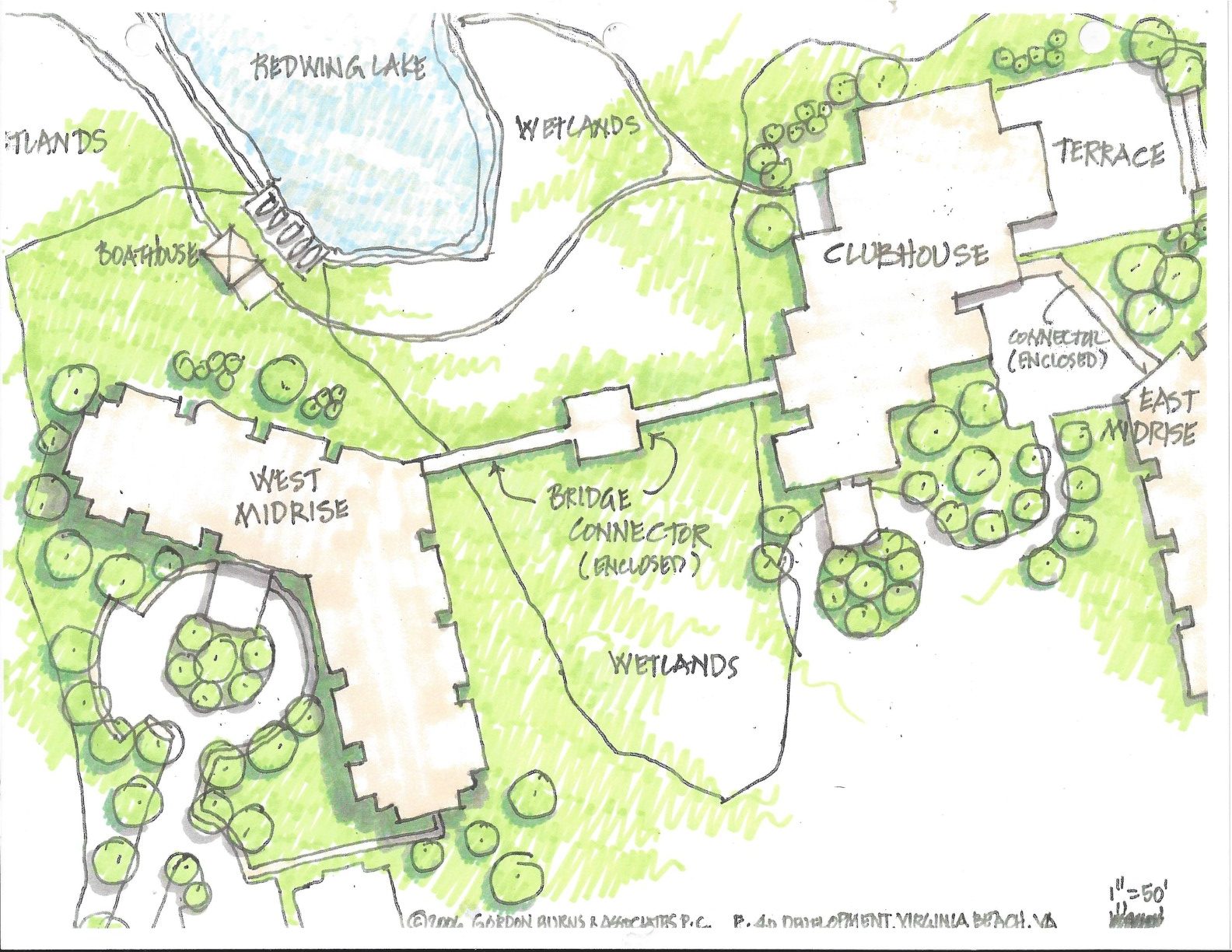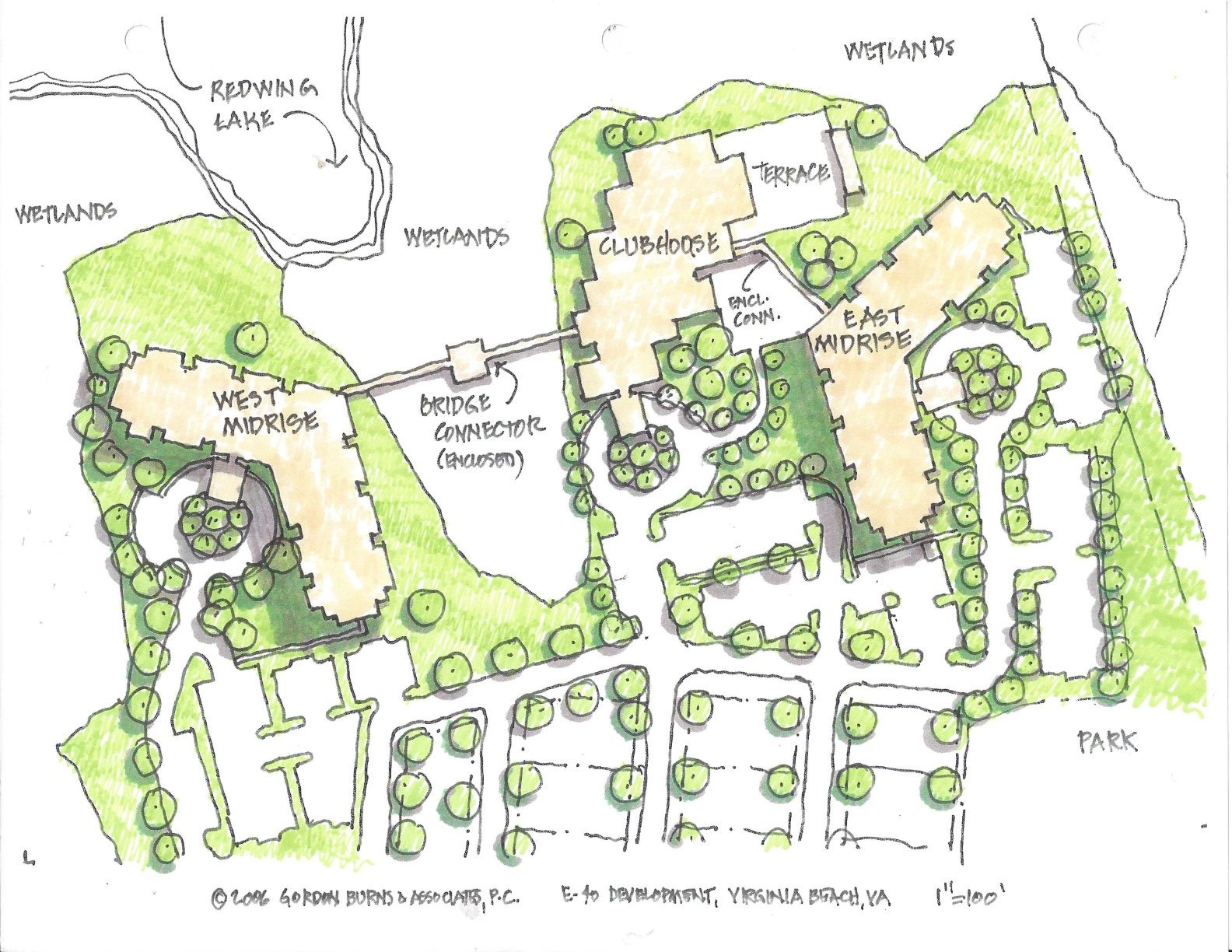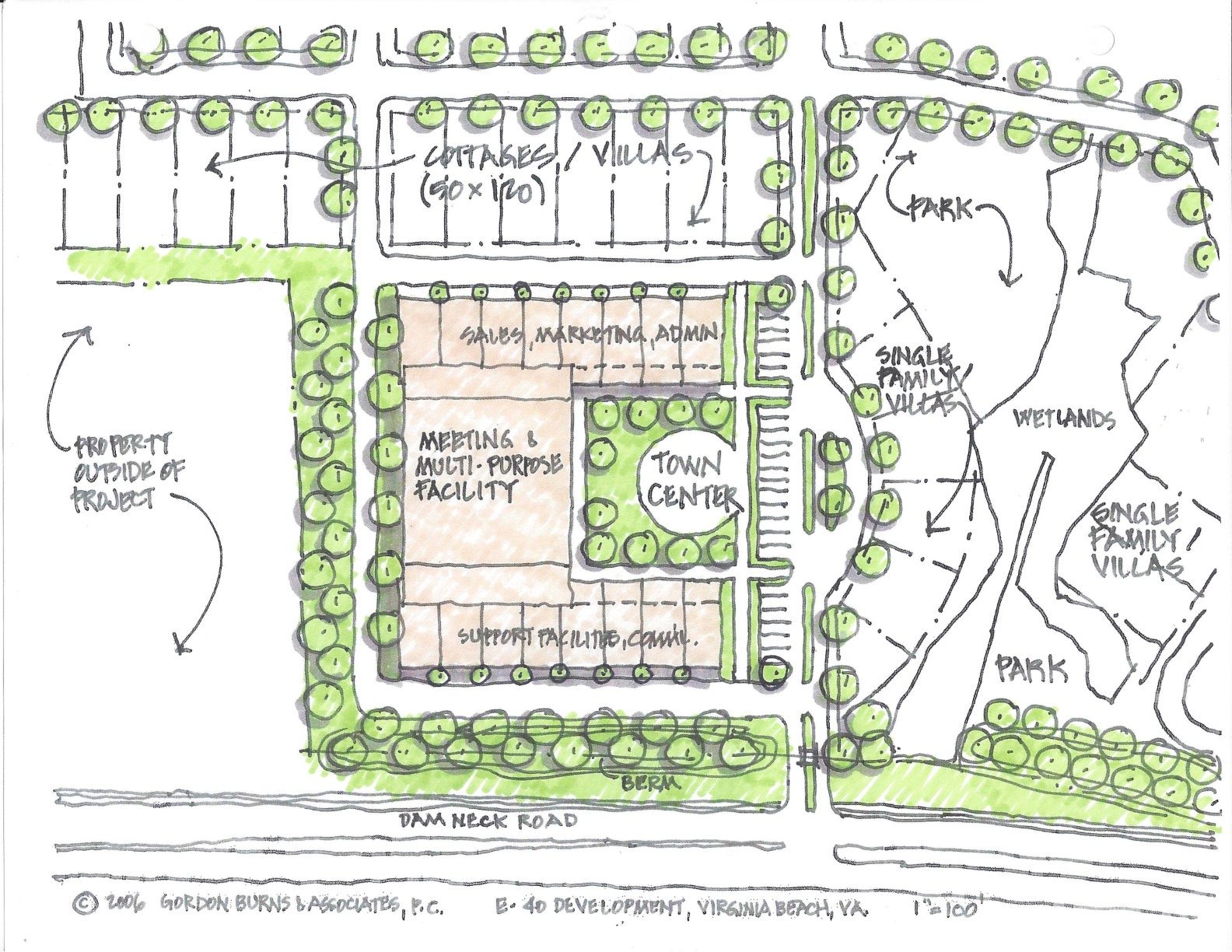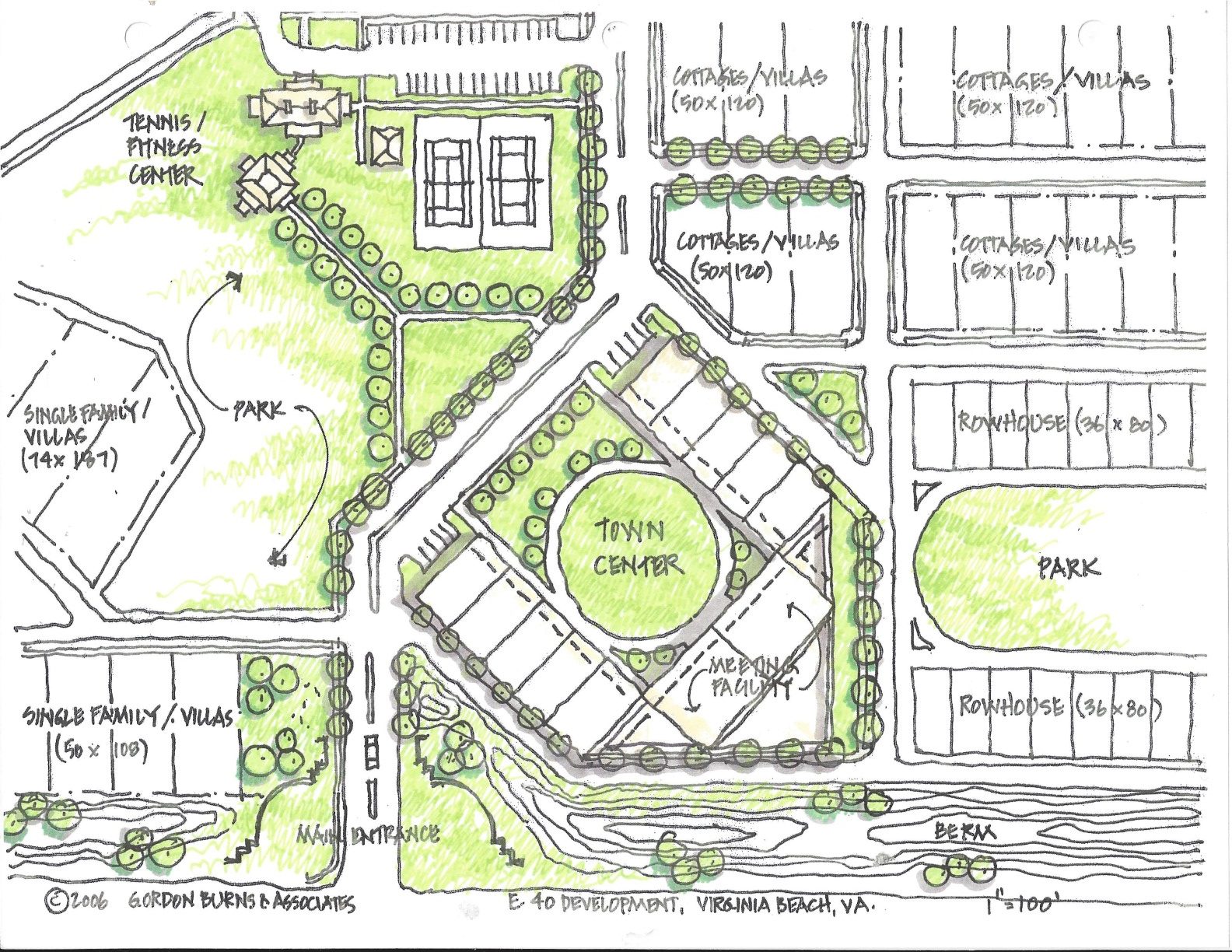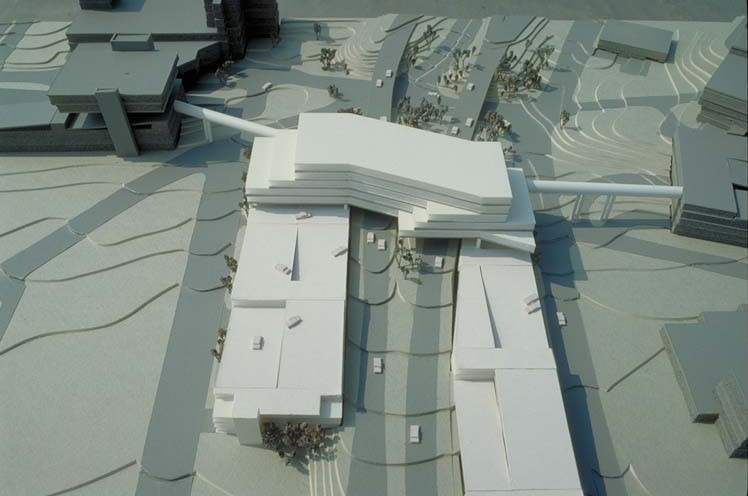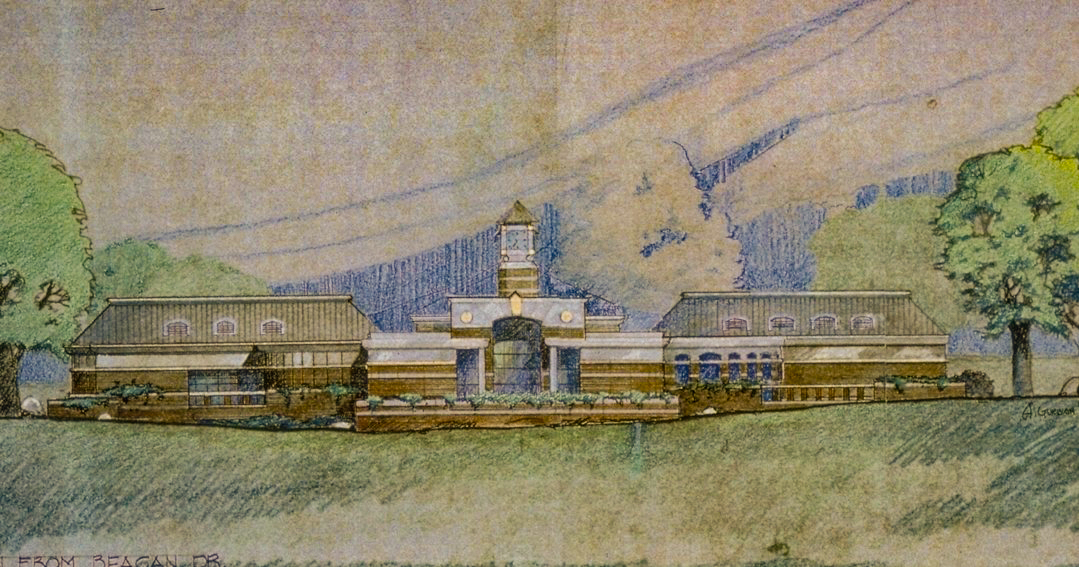Redwing Shores
The concept of a “charrette” for Redwing Shores arose out of discussions with the development team for Atlantic Shores and the desire to build on its success.
The property upon which the existing Atlantic Shores is constructed consists of approximately 100 acres, the western half of an original 200-acre parcel of land. Since the eastern half of the original parcel contains more wetlands and less contiguous uplands, the more favorable west half of the parcel was developed first as the current Atlantic Shores community.
In 2007, designs were started as a “charrette” for the development of the east 100 acres as an extension of the original Atlantic Shores community, but with many new concepts and amenities.
Early site planning with GB&A, civil engineering, and the City of Virginia Beach Planning Department, rendered an overall concept to retain the uplands for buildings and mitigate small portions of the wetlands to connect upland to upland and leave the remaining wetlands undisturbed. Through this planning process, the 100-acre original parcel was reduced to 40 acres of buildable land, leaving 60 acres of undisturbed wetlands and woodlands. The property at that time became known as the “East-40”.
As with Atlantic Shores, the design team developed concepts to utilize the wetlands and woodlands as natural amenities for non-building uses. Buildings and units took full advantage of the wetland views and the natural landscapes offered.
Redwing Lake frontage had a Boathouse Restaurant with an adjacent sales office and boat docks. A small commercial area designed to serve residents as well as the public was planned along Dam Neck Road. A Town Center was designed adjacent the commercial area. Many other design options were explored. The 40-acres of buildable land had the natural amenities of Redwing Lake, its shoreline, and 60-acres of wetlands and natural woodlands to work with.
Due to circumstances outside of the project, the 2008 recession put the continued design effort on hold. It did not appear to be the best time to go forward with such a development. Nevertheless, the “charrette” was successful in achieving an outstanding concept for the development of the property and establishing its highest and best use, at a minimum of cost and time.


